The old cathedral is devastated by a fire!
It is a common occurrence for many Gothic cathedrals; their history begins with the destruction of the old church, often due to a fire. In Beauvais, it was in 1225 that the old cathedral-church, now called the ‘Basse-Œuvre,’ was destroyed. Instead of rebuilding, Bishop Milon de Nanteuil chose to construct a new edifice in the style of the time: Gothic art, also known as French or Gothic art. The goal was to make it the largest and most daring cathedral in all of Christendom!
Start of the works
The construction work, which began on the northwest side, continued on the southwest side around 1230. The building slowly rises on foundations firmly set on hard rock, located more than 10 meters deep. Chalk extracted from the quarries of Beauvais and Saint-Martin-le-Nœud is used for construction.

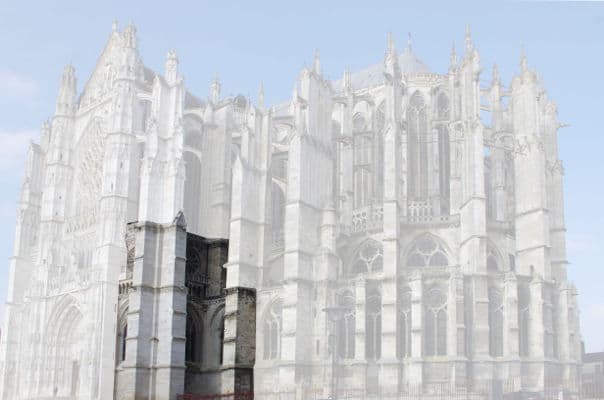
It takes 46 years to complete the construction of the choir.
By around 1240, the base of the choir, everything below the clerestory, is completed. The work continues from north to south and from west to east. The construction likely rises a bit higher than originally planned.

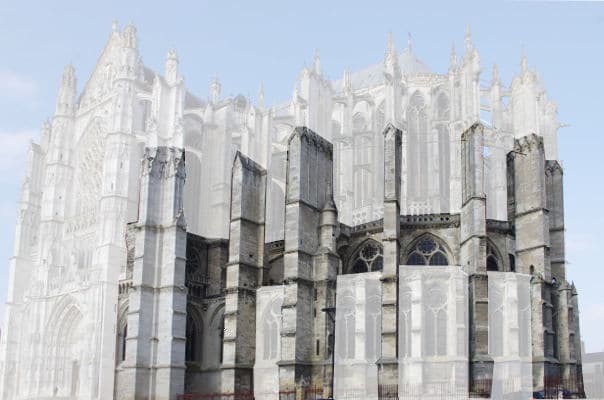
By around 1260, the choir is constructed
Consecrated, it is ready for religious services. Its vault reaches almost 47 meters, 4 meters higher than in Amiens. It’s the tallest stone Gothic vault in the world. Like the heavenly city in the Apocalypse, its height equals its width: 144 royal feet.
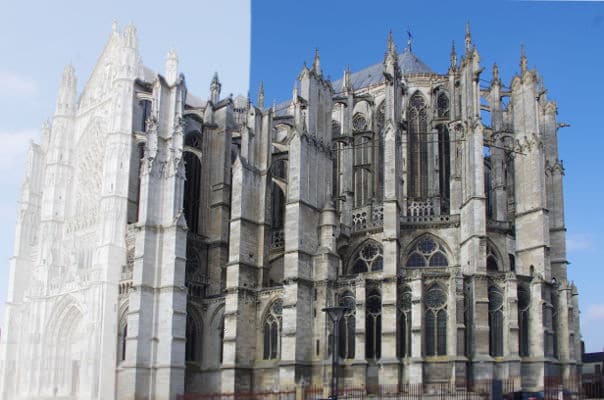
A first catastrophe
After about fifteen years, a catastrophe occurred. On a Friday in November 1284, flying buttresses twisted and broke, leading to the collapse of the choir’s vault.
The cathedral, towering high, extended beyond the nearby plateau and was susceptible to strong winds. It was likely a storm that triggered this disaster. The apse, reinforced by its arched structure, didn’t suffer much. The wooden framework also remained in place, forming a bridge between the apse and the wider west side, which had suffered less damage.
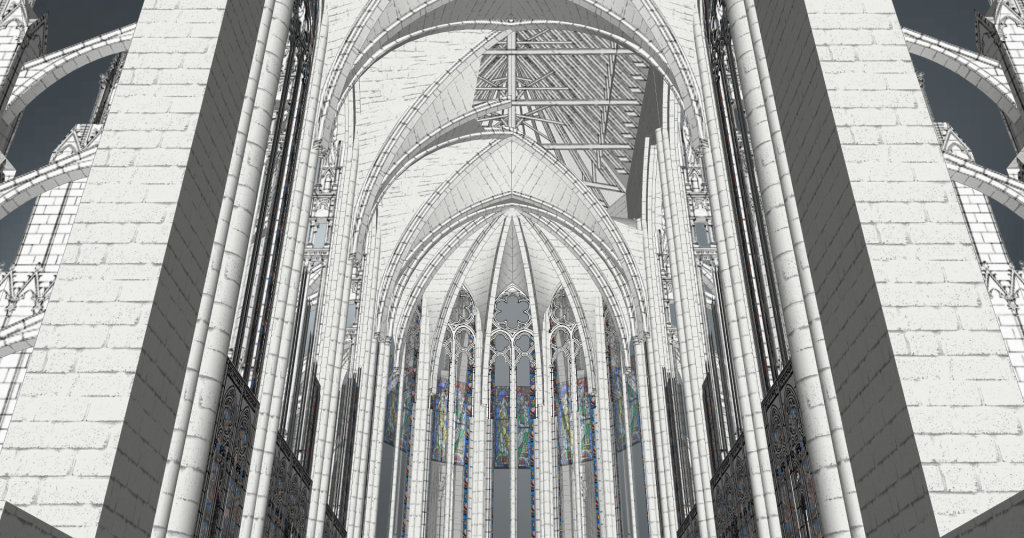
The reconstruction
The reconstruction was not completed until around 1340. The choir was heavily modified during this process. As a precaution, new intermediate pillars, which were narrower, were added to divide the bays. This increased the number of bays from 3 to 6 for the right side of the choir.


The apse, which already had narrow bays, was not modified. The repairs were lengthy and likely concluded around 1347.

Then came the dark period of the Black Death, followed by the Hundred Years’ War, during which the armies of Charles the Bold besieged the city in 1472. The city was valiantly defended by Jeanne Hachette.
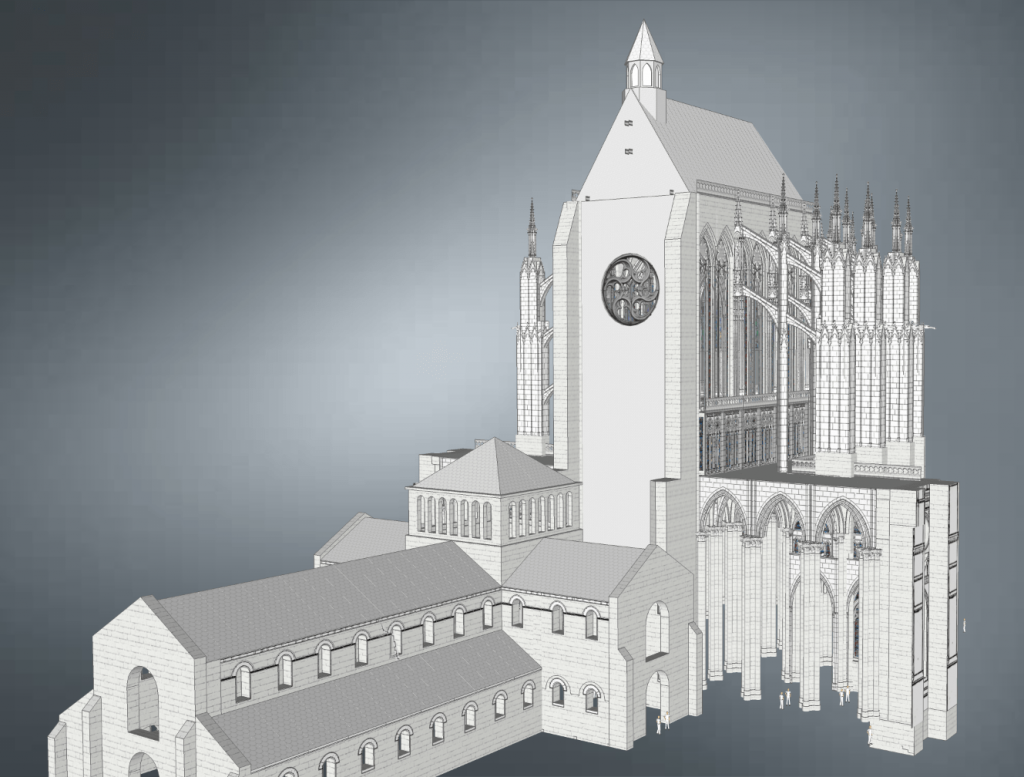
150 years later, work resumed.
150 years after the reconstruction of the choir, it was finally possible to consider adding a transept to the cathedral. With peace restored, it was decided to complete the structure with a transept. Begun in May 1500, this masterpiece of the Flamboyant period would require 50 long years to be built. Martin Chambiges, the director of the works (assisted by Jean Vast), showed great talent and ingenuity in the face of the colossal proportions already imposed by the choir. The vaults would be as high as those of the choir, even reaching 48.5 meters! However, since the choir was still at risk, they had to settle for building the transept and the nave with a focus on solidity.
The work thus began on the south side under the direction of Martin Chambiges. After his death in 1532, the work continued on the north side with his successors and simultaneously on both sides.
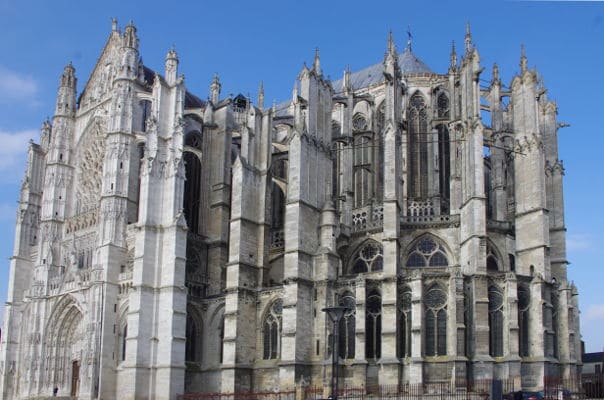
An oversized spire.
Instead of extending the cathedral with a nave, which would have stabilized the building, they decided to build a lantern tower at the crossing of the transept (learn more). Completed in 1569, this tower, topped with a spire, reached 150 meters. It collapsed 4 years later while they were hastily starting the construction of the nave to stabilize the entire structure.
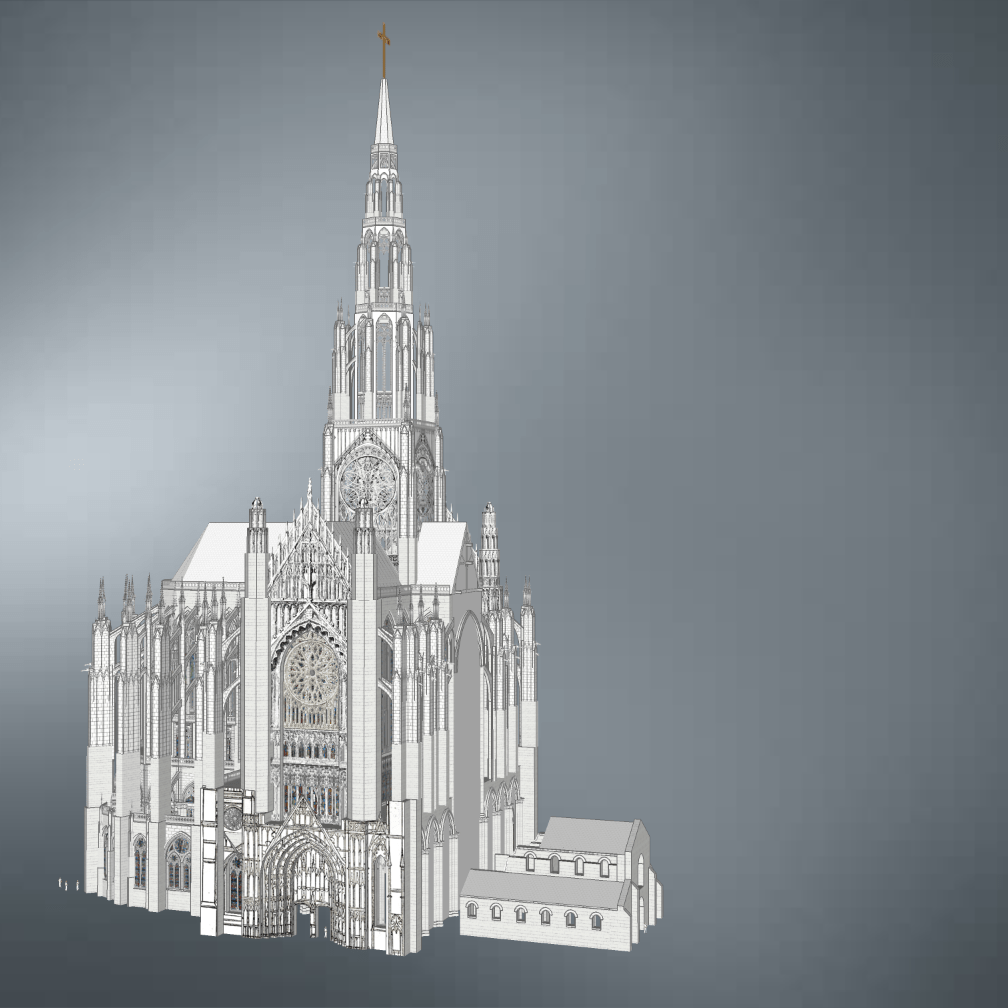
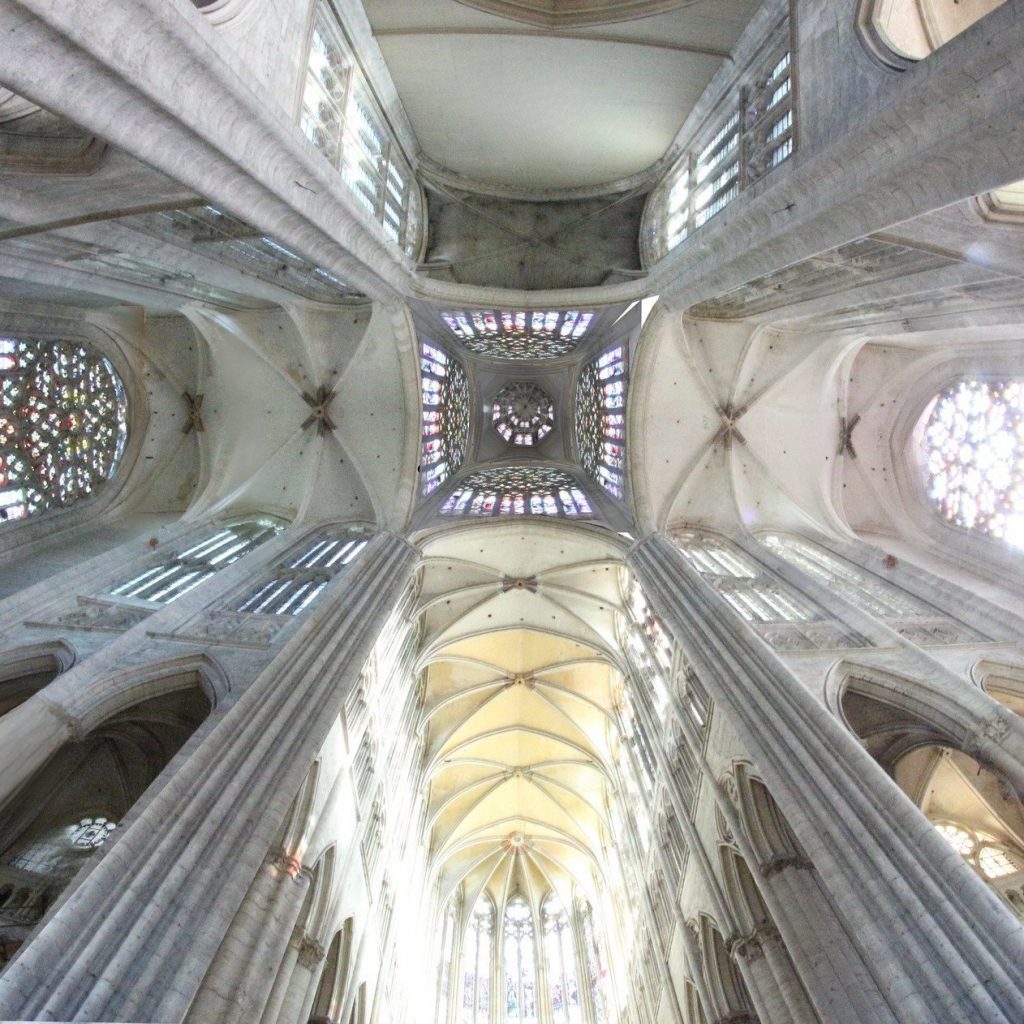
artistic view of the interior of the lantern tower.
The cathedral will remain unfinished
t is said that, due to a lack of funds to complete the transept, work stopped with a nave reduced to a single bay. But the real reason also lies, above all, in the fact that the great wave of Gothic construction had fallen out of fashion — we were already in the heart of the Renaissance.
The Revolution did not spare the cathedral: in October 1793, the sans-culottes looted and ransacked it, beheading many of its statues. Fortunately, some precious elements were secured in time. The building was then transformed into a “Temple of Reason.” In the 19th century, several plans to build the nave were put forward, but none came to fruition. In the end, this turned out to be a blessing: the absence of a nave allows us today to preserve part of the 10th-century cathedral.
In 1878, the cathedral gained a true marvel: the extraordinary astronomical clock.
The 20th century
The Second World War struck the city of Beauvais with full force, leaving it almost entirely destroyed in 1940, yet the cathedral suffered less damage than the rest of the town. Many of its ancient stained-glass windows had been safeguarded in time. The great organ, however, located at the southern entrance of the ambulatory, was rendered unusable. It was completely rebuilt on a new gallery, installed on the west wall, and inaugurated in 1979.
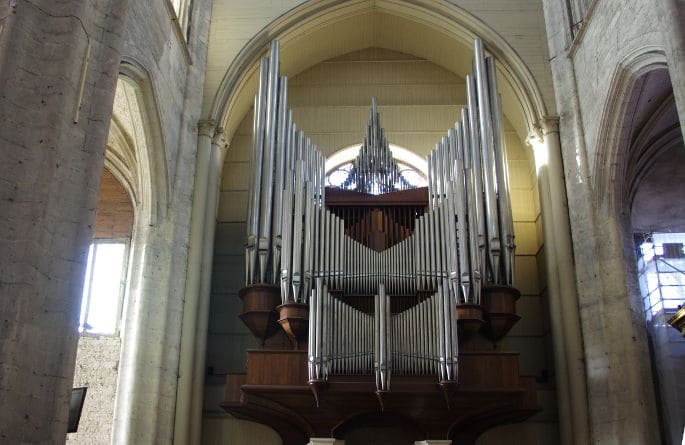
or a time, the cathedral remained stable. In the 1960s, the iron tie rods — deemed unsightly and unnecessary — were removed. Twenty years later, the appearance of cracks in the transept led, in the 1990s, to the emergency installation of timber shoring, followed by the reinstallation of the metal structure.
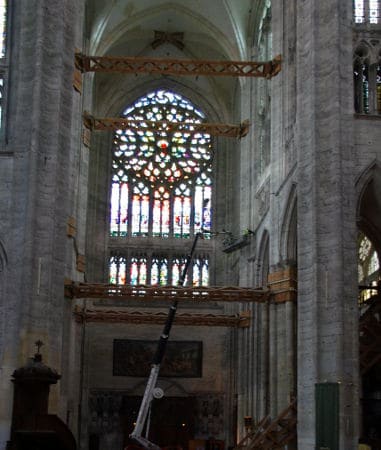
In 2012, major works were undertaken on the roof framework and covering of the choir to restore its watertightness. The monumental scaffolding began to be dismantled in September 2012.

In 2014, the structure appeared to have stabilised; sensors were installed to monitor its solidity before considering the removal of the shoring.
Ongoing Works
Today, the restoration project focuses on repairing the roof framework, improving the transept’s watertightness, building firebreak walls beneath the roof, and removing the wooden shoring inside the transept. The detailed programme can be consulted on the Ministry of Culture’s website.

On August 13, 2025, the scaffolding on the south arm of the transept was finally removed, restoring all the splendour of the space beneath the vaults. The restoration of the crossing vaults is underway, while work on the north transept still remains to be done.

